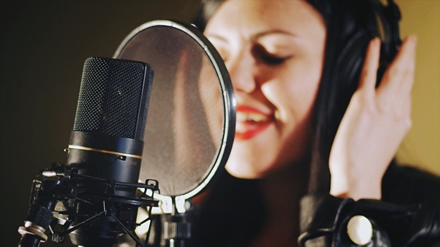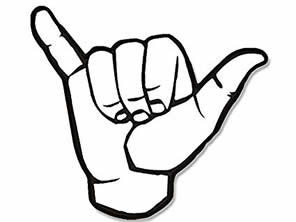 Voice acting is so much more than just talking into a mic. When you’re interpreting your scripts, you should not only think your performance choices like mood/attitude who your audience is, and how you want them to feel—you should also think about the how you’re interacting with the mic itself.
Voice acting is so much more than just talking into a mic. When you’re interpreting your scripts, you should not only think your performance choices like mood/attitude who your audience is, and how you want them to feel—you should also think about the how you’re interacting with the mic itself.
For example, if it’s a conversational script, keep it—you guessed it!—conversational! Think about the volume level in which you’d speak if you were talking to someone sitting right next to you.
Or, if it’s a heartfelt or tender script, think about how softly you’d speak to someone in that case.
Your vocal volume shouldn’t be a “one size fits all” situation. Be mindful not only of your volume, but also of your proximity to the microphone itself. The softer you speak, the closer you should get to the mic–and if you’re self-recording, remember to turn up your mic gain.
Now let’s say you’re going the opposite direction. Let’s say you’re doing a full-voice performance, like a loud, booming character going into battle. In this case, back off that mic! You’ll want some distance between you and your microphone, both to protect the mic itself (those things are fragile!) and to improve your audio quality. You’ll also want to be slightly off-axis in some cases as well, and if you’re self-recording at home, make sure to lower your mic gain. Yelling directly into the microphone at full volume with the gain turned way up is a recipe for disaster!
Another common mistake? Not staying on-mic when using body language to perform. Using your body during your voice over performance is awesome, and a must for a good performance. But don’t get so carried away that you wind up off-mic! It’s critically important to get a clean, consistent recording. We are ‘auditory’ performers after all!
A few other tips on proper mic technique:
1. Stay hydrated! Drinking plenty of water before you step into the booth and while you’re recording helps reduce mouth noise (those pesky clicking sounds you hear when you’re dehydrated). You can also keep your mouth hydrated by keeping hard candies like Jolly Ranchers, mints, or lollipops in your booth (just don’t tell your dentist).
2. If you have to cough, NEVER cough on-mic. Remember: those things are fragile! Coughing directly into your mic can also seriously damage it. (Also, it’s not hygienic—step outside the booth or turn away if you need to cough.)
3. We say this all the time, but we’ll say it again: Don’t ever–for the love of all that is good and pure in this world–tap on the mic and say, “is this thing on?” during a live session. Just…just don’t.
4. If you’re storing or transporting your mic, keep it secure and cushioned to prevent dirt and dust from building up inside–this can negatively affect your audio quality.
5. Generally, if you’re voicing a script that requires a conversational tone with medium/regular volume, make the “hang loose” sign with one hand. Then, place your thumb on your chin and your pinkie on the mic–that’s about the distance you want to be from the mic for solid sound quality.
Good mic technique can mean the difference between you missing out on a job and you booking it. Treat your microphone with tender, loving care—it’s the main tool of your trade, after all!